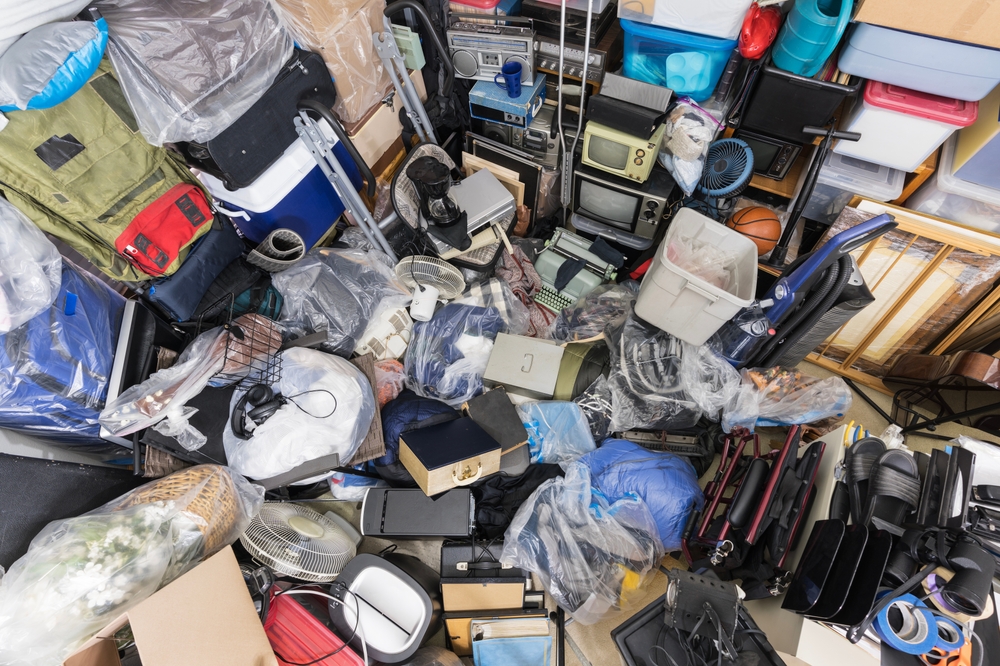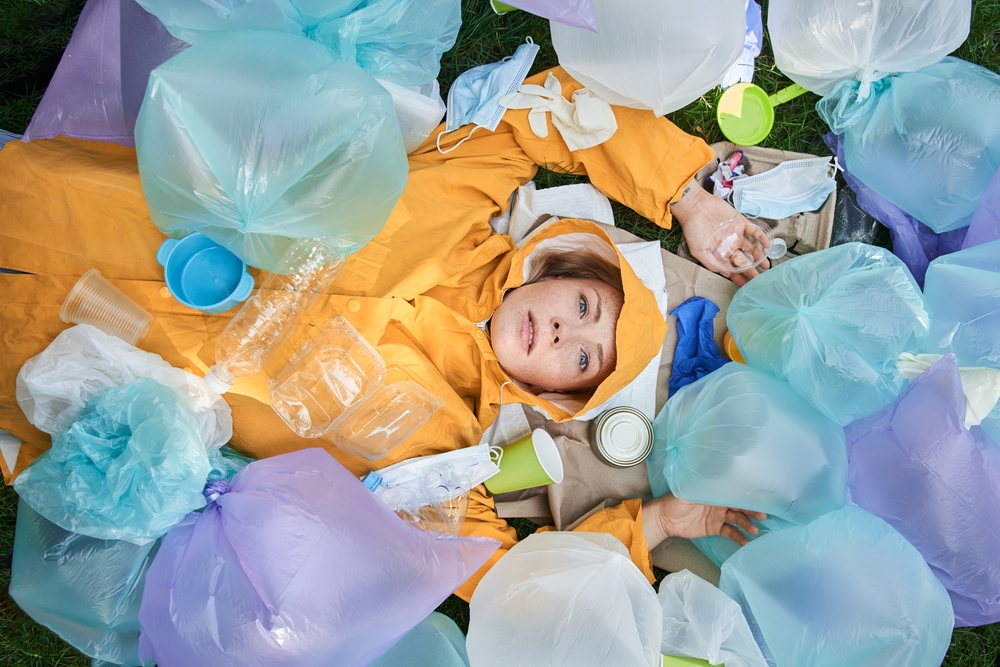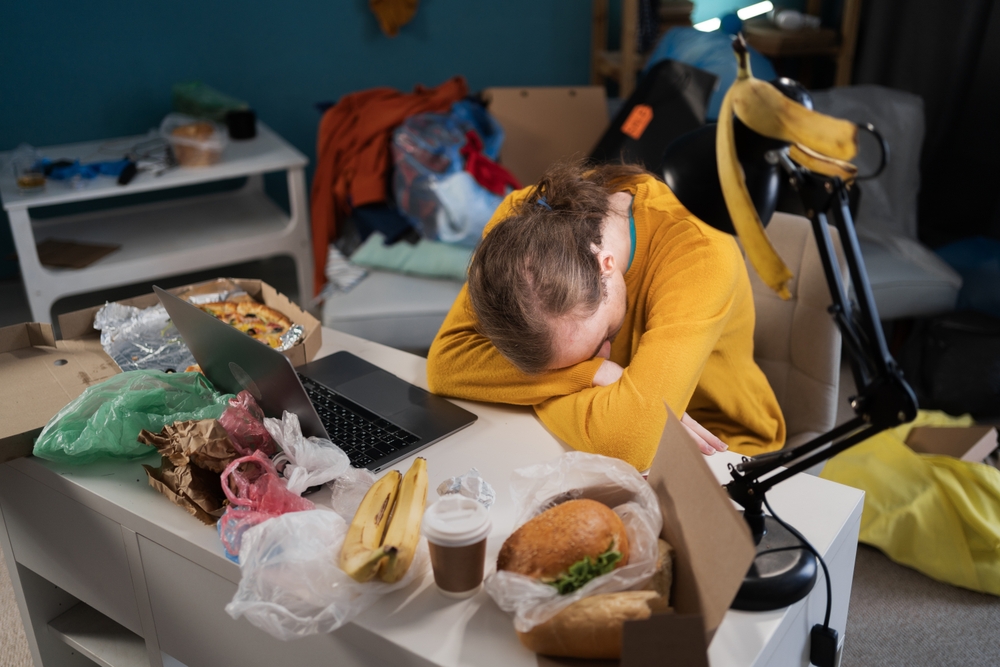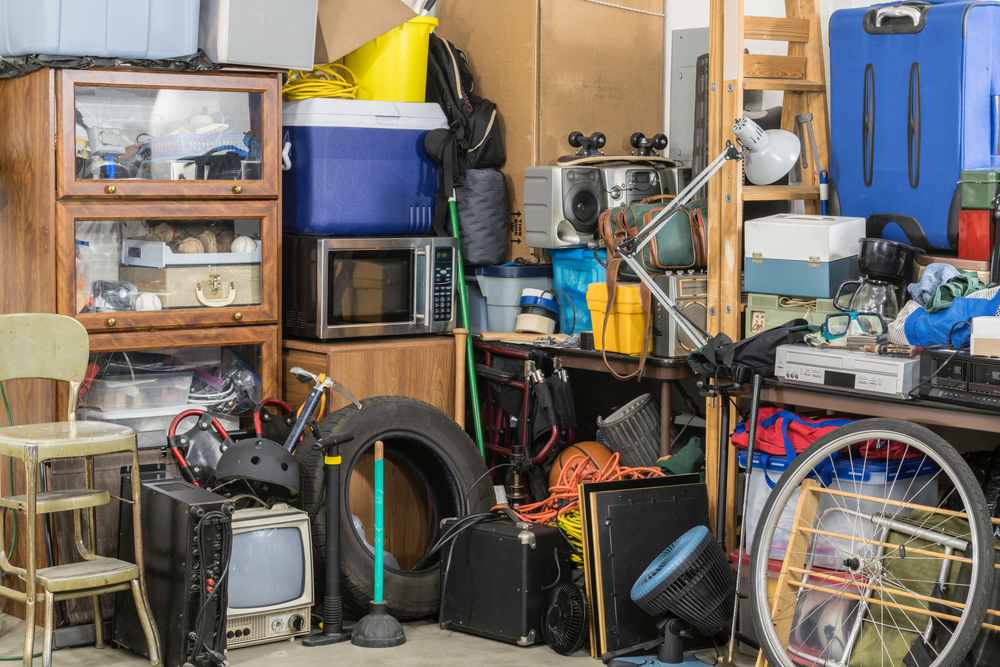Scientists Have Finally Figured Out What Causes ‘Hoarding’

Most people think they know what hoarding looks like: piles of junk, cramped hallways, and homes that resemble storage units more than living spaces. But those images don’t explain what actually causes hoarding—or why some people find it so hard to let go of things. The reality is more complicated than a messy room or poor cleaning habits. Hoarding is a behavioral condition that often starts early, runs deep, and has little to do with laziness or disorganization.
It wasn’t until 2013 that hoarding disorder was officially recognized in the Diagnostic and Statistical Manual of Mental Disorders (DSM-5). That means we’re only just beginning to understand the condition from a clinical and psychological standpoint. What researchers have uncovered so far is changing how we think about clutter, emotional attachment, and the hidden toll of living with too much.

What Hoarding Really Is (And Isn’t)
When most people think of hoarding, they picture homes overwhelmed by piles of seemingly useless items, blocked hallways, and stacks of clutter that render entire rooms unlivable. These images, popularized by TV shows and online documentaries, present the most extreme cases—often meant to shock or entertain. But the reality is far more complex. Hoarding isn’t about laziness, messiness, or poor organization. It’s a recognized mental health condition with emotional, cognitive, and behavioral dimensions that go far beyond what meets the eye. And despite how common the behavior is, hoarding disorder was only officially acknowledged by the medical community in 2013, when it was added to the DSM-5—the standard classification manual used by mental health professionals.
This delay in recognition has had consequences. For decades, hoarding was misunderstood or misdiagnosed, often lumped in with obsessive-compulsive disorder (OCD) or simply labeled as bad habits. As a result, people living with hoarding behaviors often went without effective support until the condition spiraled into a crisis. The clinical definition now recognizes that the central feature of hoarding isn’t the presence of clutter but the persistent difficulty discarding possessions—regardless of their actual value. That difficulty is typically driven by emotional attachment, fear of loss, or the belief that an item might be needed in the future. It’s not about the object itself, but what it represents: a memory, a moment, or a perceived sense of security.
Unlike general clutter or even enthusiastic collecting, hoarding exists on a continuum and impacts people to varying degrees. Some may struggle mildly with discarding things but can still function day-to-day. Others find their living spaces so overtaken by items that cooking, bathing, or sleeping becomes nearly impossible. The issue isn’t about neatness—it’s about whether the behavior is interfering with a person’s ability to live safely and comfortably. That’s a critical distinction that is often lost in the way hoarding is portrayed publicly. The sensationalist lens makes it harder for people to recognize their own struggles early and makes them less likely to seek help out of fear of being judged or dismissed.
Experts emphasize that the conversation around hoarding needs to shift from one of blame to one of understanding. Instead of focusing on how much stuff someone has, it’s more helpful to ask why letting go feels impossible. What emotional function does holding onto things serve in their life? Understanding these underlying factors is what leads to more compassionate and effective support—not quick fixes or forced clean-outs. Hoarding isn’t solved by a dumpster; it’s addressed by understanding what’s happening beneath the surface.

How Hoarding Begins—And Why It Starts So Early
Hoarding rarely starts suddenly or in adulthood. Research consistently shows that the early signs often surface in childhood or adolescence, typically between the ages of 11 and 15. These are critical years when kids are figuring out who they are, managing academic and social pressures, and beginning to form habits around control, safety, and attachment. For some, this period also marks the quiet beginning of a lifelong struggle with possessions—not because they’re particularly materialistic, but because objects start to carry emotional weight.
Many adults who later develop hoarding behaviors recall forming unusually strong attachments to their belongings as kids. Something as simple as a worn-out toy, an empty candy wrapper, or a torn notebook could feel significant. Not because of its function or appearance, but because of the memory or feeling it represented. The thought of throwing it away didn’t just feel wasteful—it felt like losing a part of themselves. These emotional attachments often went unnoticed or were misunderstood by parents and teachers. In some cases, well-meaning adults attempted to declutter the child’s belongings without involving them in the process, thinking it was just a matter of tidying up. But to the child, it felt like a violation, triggering shame, anger, or anxiety that reinforced their urge to hold on tighter.
This emotional blueprint can become more pronounced during major life transitions. Some individuals say their hoarding tendencies escalated during college, after graduation, or following a major move—any moment when life feels less stable. One person in a doctoral study linked the beginning of his hoarding behavior to losing access to student resources and the sense of identity that came with them. As his external support systems disappeared, his attachment to physical objects grew stronger. This pattern is common: when life feels uncertain, holding onto things can feel like a form of control or emotional insurance.
Early neglect, trauma, or inconsistent caregiving can also play a role. When emotional needs aren’t reliably met, some people turn to objects to create a sense of comfort, permanence, or predictability. A box of old school papers or broken gadgets might seem like clutter to others, but for someone who’s felt unseen or unsupported, these items serve as silent witnesses to their experiences. Over time, the act of saving things becomes a coping strategy, even if it causes problems later on.
The root causes of hoarding aren’t the same for everyone, but the early emotional tone is strikingly consistent: items aren’t just things—they’re anchors. And unless those emotional drivers are recognized and addressed, simply removing the clutter does little to solve the problem.

Why Letting Go Feels So Hard
For someone with hoarding disorder, the idea of discarding even a seemingly insignificant item—a receipt, a broken lamp, an expired coupon—can trigger real distress. This isn’t about messiness or an unwillingness to clean up. It’s about attachment. People who hoard tend to form deeper and broader emotional bonds with objects than the average person. While most people might save a few sentimental items, individuals with hoarding tendencies often see value in nearly everything they own.
This emotional intensity is one of the main reasons why conventional decluttering advice doesn’t work. Telling someone to “just throw it out” ignores what the item represents to them. It’s not the object itself—it’s the memory, the identity, the potential future need. Letting go of the object can feel like erasing part of their life or losing control over their environment. In many cases, they’re not saving things because they want to—they’re saving them because discarding feels overwhelming or even emotionally unsafe.
Experts also note that this attachment often ties into deeper cognitive patterns. Some people who hoard have difficulty categorizing, prioritizing, or making decisions about their belongings. This cognitive overload can paralyze them when faced with sorting through items, especially during times of stress. A pile of papers isn’t just paperwork—it’s dozens of tiny decisions they don’t feel equipped to make. Add emotional meaning to each item, and the task becomes impossible to untangle.
Major life disruptions tend to make this worse. Events like the loss of a loved one, a divorce, a job loss, or a move can intensify the urge to hold onto things. When life feels uncertain, saving physical items can provide a sense of continuity and safety. These behaviors may not be logical, but they’re often consistent with a need for emotional regulation. The object becomes a stand-in for stability. That’s why treatment for hoarding isn’t about organizing. It’s about working through the emotional and psychological reasons behind the behavior. Without addressing what makes each item feel essential, attempts to declutter are often temporary—or traumatic. Lasting change comes from understanding what the clutter means, not just getting rid of it.

Practical Tips for Navigating Hoarding—Without Shame or Overwhelm
If you’ve ever struggled to throw something away because “it might be useful someday” or you’ve felt uneasy about parting with sentimental items, you’re not alone. Many people experience moments of attachment to their belongings. The key difference is when those behaviors start interfering with daily life—when rooms become hard to use, decisions about possessions feel paralyzing, or relationships are strained because of the clutter. If that sounds familiar, here are some concrete steps that can help without resorting to judgment or oversimplified advice.
1. Start with one manageable area. Avoid the urge to tackle everything at once. Choose a small, contained space—like one kitchen drawer or a single shelf. Set a timer for 15 or 20 minutes and focus on just that area. Finishing a small task builds momentum without triggering the emotional overwhelm that can come with large-scale cleanouts.
2. Replace “throw away” with “rehome.” Language matters. For many people with hoarding tendencies, “throwing away” feels final and painful. Instead, try reframing the action: Could this item be donated, recycled, or passed on to someone who needs it? Rehoming offers a sense of purpose and reduces the emotional weight of letting go.
3. Notice the stories attached to objects. When you find yourself stuck, ask: “What does this item mean to me?” That simple question can reveal whether you’re keeping something because of genuine emotional value or because of fear, guilt, or habit. Understanding the “why” helps loosen the grip.
4. Don’t declutter for someone else—especially a child. If you’re supporting a loved one, especially a younger person, resist the temptation to throw things out without their input. It may seem helpful in the moment, but it can create lasting mistrust and deepen the emotional attachment to future belongings. Instead, engage them in the process and listen to how they feel about their possessions.
5. Look beyond the clutter. Hoarding is rarely just about the stuff. It’s often a coping mechanism for deeper stress, grief, or unresolved emotions. If the clutter feels symbolic of something bigger, consider talking to a therapist—preferably one with experience in hoarding behaviors or cognitive behavioral therapy (CBT).
6. Don’t wait for a “rock bottom” moment. You don’t need to be living in unsafe conditions to ask for help. Hoarding exists on a spectrum, and early support is more effective and less distressing. Whether it’s a trusted friend, a community support group, or a professional, having someone walk alongside you in the process can make a big difference.
Organizations like Clouds End and the International OCD Foundation offer education, online support groups, and practical strategies specifically for hoarding disorder. These resources provide a safer starting point than going it alone or relying on shows that sensationalize the issue.
Loading...

